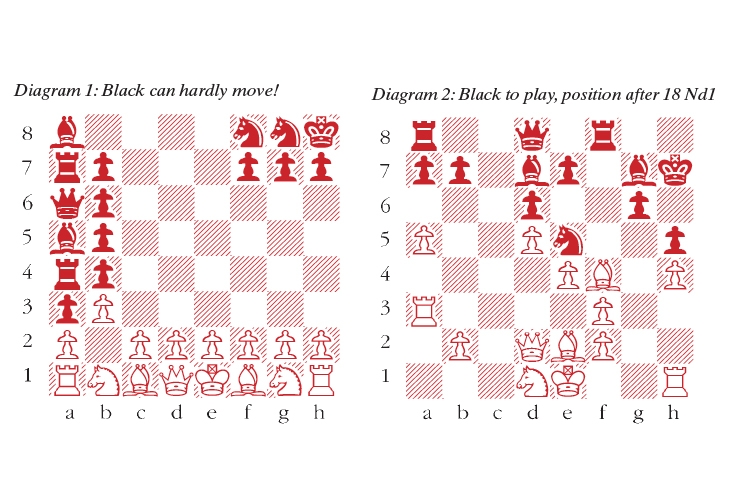‘Exchange chess’ (also known as bughouse) is the chess equivalent of a three-legged race. It is played in teams of two, on adjacent boards with opposite colours, and it works best when nobody takes it seriously. The only essential rule is that when you capture an opponent’s piece, you hand it to your partner, who may later plonk it down on an empty square in lieu of moving a piece. A checkmate on either board wins, no matter how dire the adjacent situation.
A long time ago, when we couldn’t convene a foursome, a friend taught me to play ‘one-board exchange chess’. This variant, which I now see is listed as ‘Replacement chess’ in the Classified Encyclopedia of Chess Variants, requires just two players. The only rule is that captured pieces must be immediately replaced on a different square; pawns can’t be replaced on the first and last ranks, and the way we played it, bishops didn’t have to be kept apart.
Exchange chess is fun for being brisk and chaotic. Replacement chess was, to my surprise, slow-burning and deliberate. What fascinated me is that since you can never reduce your opponent’s firepower, the only decent strategy is to contain it. My favourite ruse was to try to place my opponent’s pieces as in the first diagram, creating a traffic jam of queenside pieces which can be entirely immobilised by two White pawns on a2 and b3, so the nearly deserted Black king can be hunted down on the other side of the board.
The following game, won by Magnus Carlsen at the recent World Cup in Sochi, shows the practical importance of piece mobility in real chess. Indeed, computer programs often use the number of legal moves available to each sides as a component in their evaluation.








Comments
Join the debate for just £1 a month
Be part of the conversation with other Spectator readers by getting your first three months for £3.
UNLOCK ACCESS Just £1 a monthAlready a subscriber? Log in